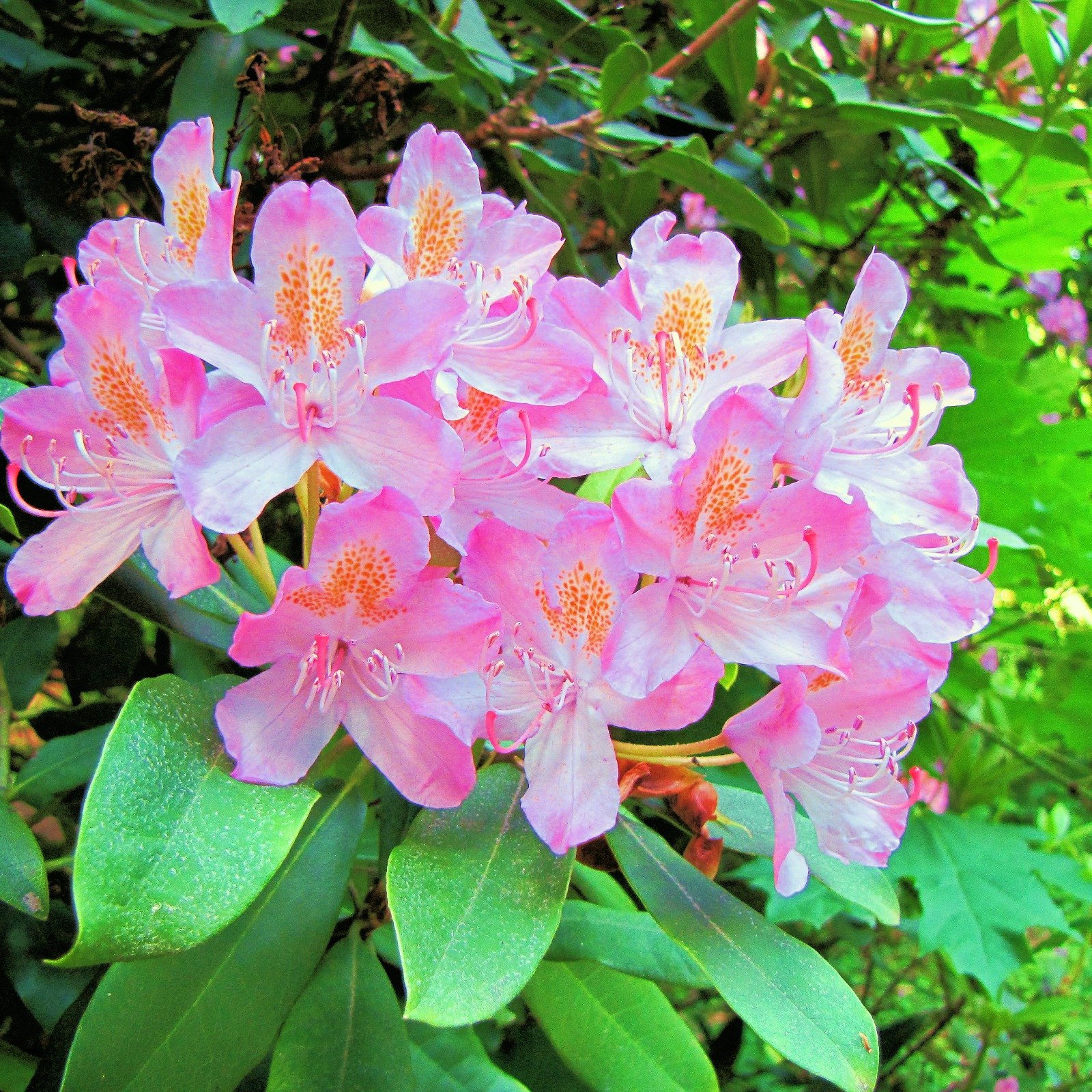Rhododendron, Alpenrose, Azalee Standardsorte

Variety
Rhododendron, Alpenrose, Azalee Standardsorte
created by Alex&Sempi at 18.02.2025
Features
Growth habit
lifespan: perennial
flower: flowering
root type: shallow-rooted
leaves: evermoist
weak growth
Location
planting: outdoor
soil moisture: no waterlogging
Fertilization: single dose of compost
light: light shade.
soil moisture: moist
Soil: medium-heavy
Water: regularly
soil moisture: not too dry
fertilization: lime-free
Planting: hedge
water: no tap water
Resistances
Winter hardy
Taste
not edible
Color
leaves: Autumn leaf coloration
Season Overview
Sowing
Harvest
Harvest
J
F
M
A
M
J
J
A
S
O
N
D
1ST YEAR
FOLLOWING YEARS
Description
The rhododendron is also known as the alpine rose and is undoubtedly one of the most important but also most demanding flowering shrubs. The genus belongs to the heather family (Ericaceae) and consists of over 1,000 species: from the subarctic 15 centimeter high dwarf shrub to the 20 meter high tree. Most of the species of interest for the garden originate from East Asia. There they grow in species-rich deciduous or mixed forests on acidic, evenly moist raw humus soils. Two species are native to the German Alpine region: the rusty-leaved alpine rose (Rhododendron ferrugineum) and the ciliated alpine rose (Rhododendron hirsutum). They can also be found in other southern and eastern European mountains in sparse coniferous forests and bushes on humus-rich soils. The numerous garden forms and hybrids from Asia are also often given the German name Alpenrose. The formerly independent genus of azaleas is now also classified as a rhododendron because of the many similarities. Incidentally, the botanical name Rhododendron comes from the Greek and literally means "rose tree". Appearance and growth A rhododendron generally grows quite slowly and usually has alternate leaves that are arranged radially around the branches. The foliage of the plant is predominantly evergreen - rarely also deciduous - and varies greatly depending on the species. Most have ovate to elongated, entire leaves with often slightly downward curving leaf edges. In some species, the leaves are covered with a white, yellow or rust-red felt when they emerge. This protects against sunburn and disappears over the course of the summer. Some deciduous azaleas display yellow-orange foliage in the fall. The color spectrum of rhododendron flowers is even wider than that of roses, as there are also blue-flowering species such as Rhododendron impeditum. The terminal flower buds are already formed in the previous year and open in April and May in most species and varieties. One of the earliest rhododendrons is the early spring rhododendron (Rhododendron 'Praecox'), which presents its flowers in March before the leaves emerge. Some large-flowered hybrids such as 'Herbstfeuer' or 'Herbstfreude' already show a foretaste of next year's flowering splendor at the end of the season.
F1 Hybrid
Not frost resistant
Growing tips
Location and soil:
Details
Light requirement
Semi-shaded
Water requirement
Moist
Soil
Medium (loamy)
Nutrient requirement
High
Light germinator
Germination temperature
20 - 25 °C (Degrees Celsius)
Plant distance
300 cm
Row spacing
300 cm
Seeding depth
0.5 cm
Companion Plants
No companion plants
Diseases
Septoria
Angular leaf spot of cucumber
Powdery mildews
Pests
Cicadas
Spider mites
Aphids